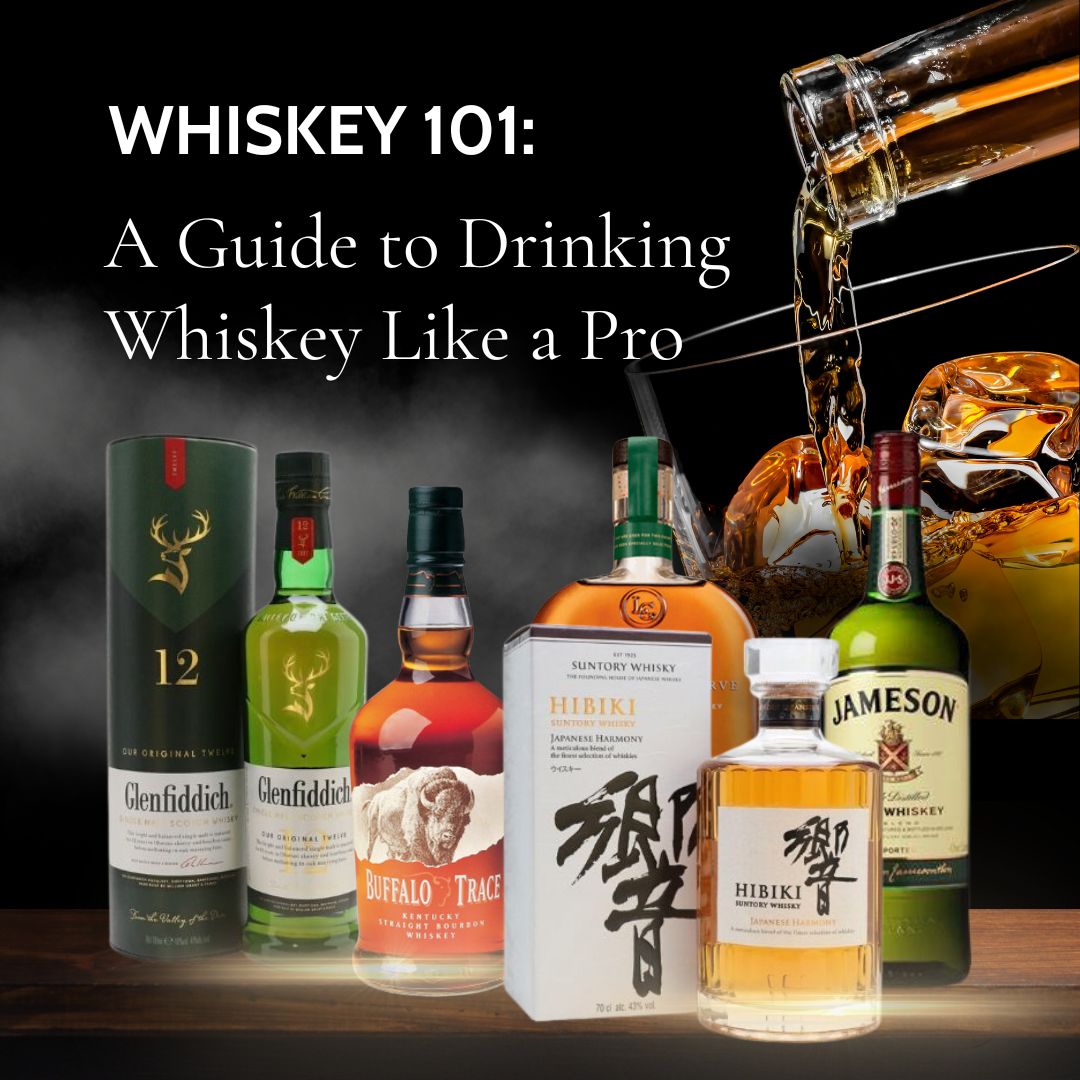Jack Nicholson once quipped ''There is no bad whiskey. There are only some whiskeys that aren't as good as others.'' Indeed, with whiskey currently undergoing a renaissance, these words ring truer now more than ever, making it even more important to learn how to drink whiskey correctly.
In this guide, we'll explore everything you need to know about how to drink whiskey correctly. From picking the right whiskey and serving it appropriately to tasting whiskey correctly, we'll delve into essentials that will enhance your whiskey-drinking experience.
How to Pick the Right Whiskey
There is no one-size-fits-all whiskey that's perfect for everyone, as each type has its distinctive flavor profile. Depending on your taste preferences, you may enjoy certain whiskeys more than others. That said, here are the common whiskey types:
Scotch Whisky
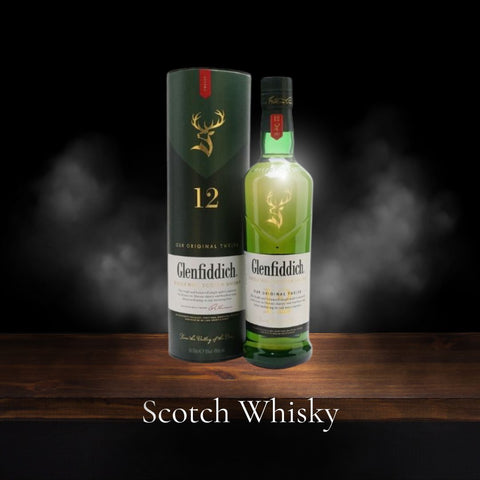
Scotch whisky, as the name implies, originates from various regions in Scotland, including Islay, Speyside, and The Highlands, with each region offering a unique take on Scotch. For example, Islay is known for its smoky whiskies, while Speyside is known for its more mellow expressions with fruity and floral notes.
Best for: Seasoned whiskey drinkers are likely to appreciate Scotch whisky more because of its bold expressions. However, some expressions, such as those from the Speyside region, like Glenfiddich 12 yr old Speyside Single Malt, may be ideal for newcomers.
Irish Whiskey
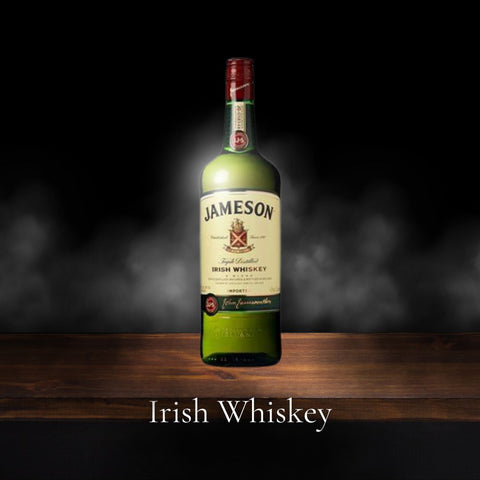
Irish whiskey is typically known for its smoothness, lightness, and approachable flavor and often features subtle fruitiness with a hint of maltiness.
Best for: Many beginners are likely to find Irish whiskeys like Jameson palatable due to their lighter and smoother profile.
Bourbon
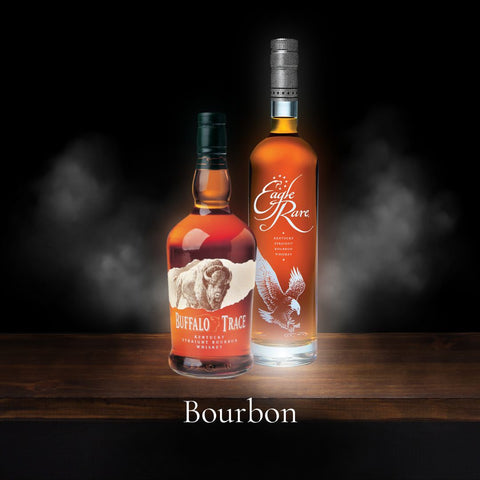
Bourbon is America's most beloved whiskey. It typically has a mellow flavor profile with prominent notes of vanilla, caramel, butterscotch, oak, and baked spices.
Best for: Bourbon is generally sweeter than other types of whiskey, making it ideal for beginners. However, seasoned whiskey connoisseurs may also enjoy it due to its full-bodied flavor.
Rye Whiskey
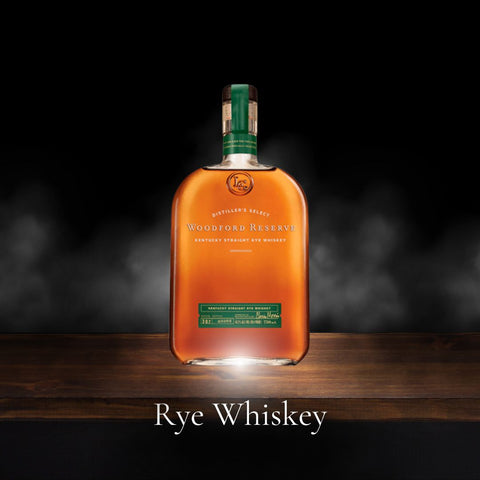
Rye is the second most popular type of whiskey in the United States behind bourbon. Unlike bourbon, rye tends to have a bolder and spicier flavor, though its flavor may vary depending on its mash bill.
Best for: Rye whiskeys with a high quantity of rye compared to corn in the mash bill typically tend to be spicier than those with less rye. So you might appreciate variants high in rye if you're a seasoned whiskey enthusiast. Conversely, variants with less rye, like Woodford Reserve Straight Rye Whiskey, may be more approachable if you aren't a seasoned rye drinker.
Japanese Whisky
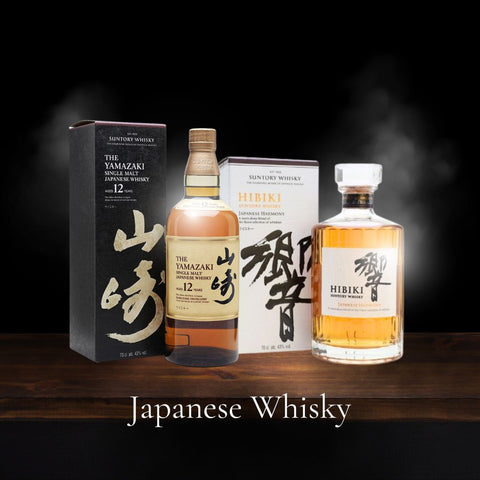
Japanese whiskies are typically known for their delicate and floral character, with subtle oak influence, which gives them a refined flavor.
Best for: Many Japanese whiskies have a harmonious balance of flavors, making them ideal for both beginners and seasoned drinkers.
How to Serve Whiskey
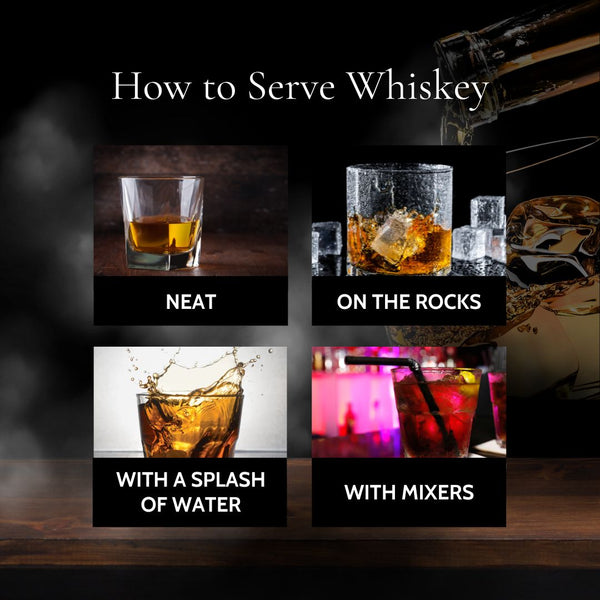
While whiskey purists assert that there's only one way to enjoy whiskey, there are various ways to savor the spirit. Here are some of them:
Neat
Most whiskey purists argue that whiskey should be drunk neat, without added mixers or ice, as it's the best way to experience its full flavor profile. While their arguments may hold water, drinking whiskey neat is best suited for high-quality or aged whiskies that have complex flavor profiles.
On the Rocks
Serving whiskey ''on the rocks'' simply involves pouring it over ice cubes. If you prefer to enjoy your whiskey chilled or dilute, adding a few ice cubes to it can make it more palatable.
With a Splash of Water
While purists insist whiskey must be drunk neat, adding a few drops of water can ''unlock'' flavors, especially in younger whiskeys, allowing you to enjoy a richer drinking experience.
With Mixers
Whiskey is a versatile drink that pairs well with a variety of mixers. Some popular mixers that you can use to make a simple two-ingredient drink include:
How to Savor Whiskey
Tasting whiskey goes beyond just taking a sip. It's an exercise that involves engaging various senses. Bearing that in mind, here's a primer on how to taste whiskey like a pro.
Observe the Color
Begin by examining the hue, preferably against a plain white background. The color can provide insights into the age and maturation process. Generally, older whiskies tend to have deeper, richer tones absorbed from the barrels they were aged in, while younger whiskies have a lighter hue.
Inhale the Scent
Before indulging in your drink, bring your glass close to your nose and inhale gently. As you inhale, take note of the various aromas, ranging from sweet and fruity to smoky and spicy. Doing so can give you a general flavor profile for the whiskey before you sip it, enhancing the tasting experience. For instance, if it's a spicy whiskey, you'll pick up hints of baked spices like cinnamon.
Take Small Sips
Swirl the whiskey to release its rich aromas. Then, take small sips and allow it to roll around in your mouth to ensure it coats your palate. This will enable you to appreciate the complexity of the whiskey and enjoy its different flavors and texture.
Identify Flavor Profiles
Let the whiskey linger on your palate and discern the various flavor notes. Is it sweet and caramel-like, or dry and spicy? Appreciating these nuances can allow you to develop a richer understanding of the whiskey's profile. If you have a bottle with tasting notes, check them out to determine if they match the flavors your palate has identified.
Take Note of the Finish
The finish refers to the aftertaste of the whiskey — the complex flavors that remain on your palate after swallowing. Pay attention to how the flavors evolve and linger after swallowing. You might notice how the taste transforms or notice subtle flavors you didn't recognize initially. Generally, a long, complex finish is a hallmark of a high-quality and aged whiskey.
How to Choose the Right Whiskey Glass
There's more to picking a whiskey glass other than aesthetics. The right whiskey glass can enhance aromas, improve aeration, and showcase the whiskey's rich hue. That said, here are some popular whiskey glasses that can elevate your drinking experience:
Tumbler
The classic tumbler, also known as the rocks or old-fashioned glass, is the most popular type of whiskey glass. Its short stature and wide bottom make it perfect for serving whiskey neat, on the rocks, or with a dash of water. It's also ideal for serving classic cocktails like the Old Fashioned, Penicillin, and Whiskey Sour.
Highball Glass
The highball glass is the go-to choice for whiskey-based mixed drinks like the Whiskey Ginger or Scotch and Soda. Its tall and slender stature makes it ideal for a generous pour of whiskey and ice cubes.
Glencairn Glass
The Glencairn glass is a whiskey-tasting glass with a tulip-shaped bowl that concentrates aromas at the top of the glass. It has a narrow neck that directs scents toward the nose, making it perfect for appreciating the nuances of well-crafted and aged whiskies.
Conclusion
Ultimately, there is no right or wrong way to drink whiskey. Whether you enjoy it neat, on the rocks, with a splash of water, or with a mixer, as long as you enjoy it, that's all that matters. However, there are some things you can do to enrich your drinking experience. From choosing the right whiskey and tasting it appropriately to choosing the right whiskey glass, follow the tips in this guide to make the most of every sip.
FAQs
What Is the Best Way for Beginners to Drink Whiskey?
While the best way to drink whiskey comes down to personal preference, beginners often find it enjoyable to start with whiskey on the rocks or with a dash of water. This helps mellow the boldness of whiskey, making it more palatable.
Which Whiskey Is Best for Beginners?
Whiskeys with a mild and approachable flavor profile are a good starting point for beginners. Bourbon, particularly bourbons with lower proofs and less intense flavor profiles, are typically suitable for beginners because of their sweet taste. Irish whiskeys can also be a welcome introduction to the world of whiskey because of their smoothness and lighter flavor profiles.
Are There Specific Food Pairings That Go Well With Whiskey?
Certain food pairings go well with whiskey than others. For instance, peaty Scotches pair well with robust cheeses or smoked salmon, while bourbon complements the sweetness of desserts or savory dishes like grilled meats.
What's the Best Way to Store an Opened Bottle of Whiskey?
Once you uncork your bottle of whiskey, the best way to store it is in a cool, dark place, away from direct sunlight. Also, consider sealing your bottle tightly with a stopper to prevent oxidation and preserve the whiskey's quality.

